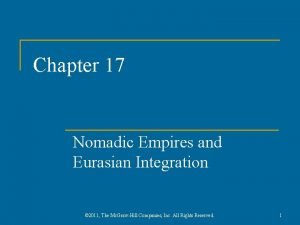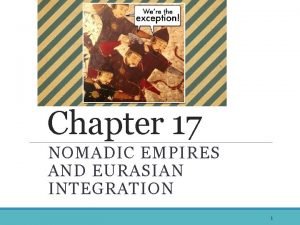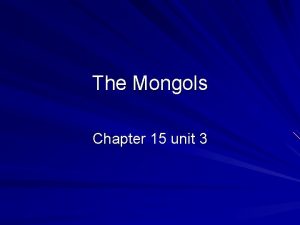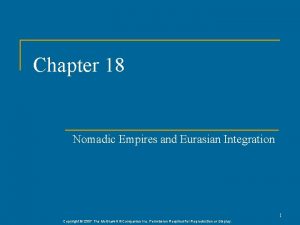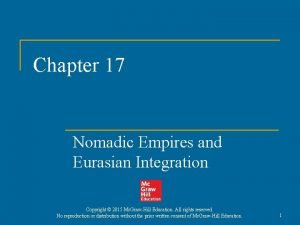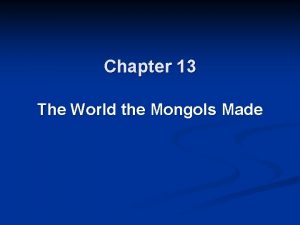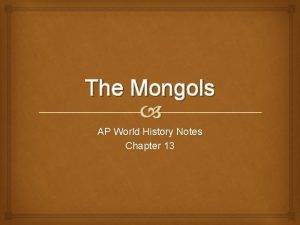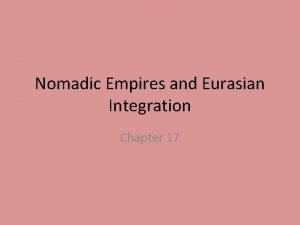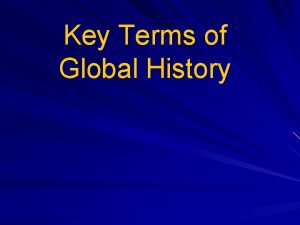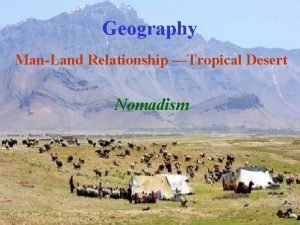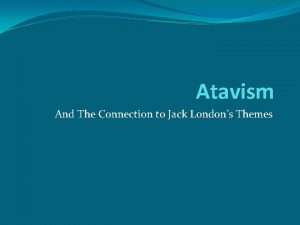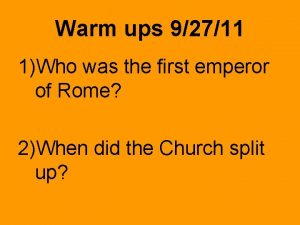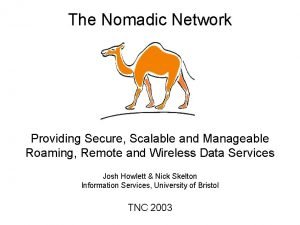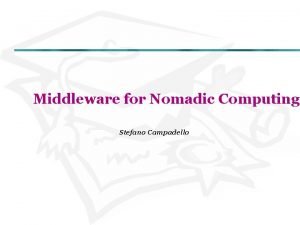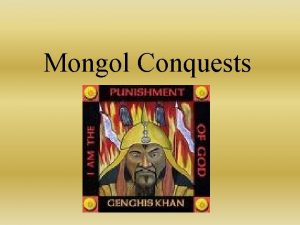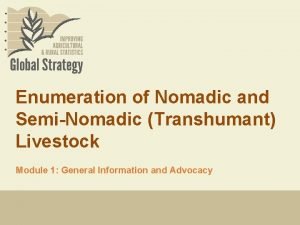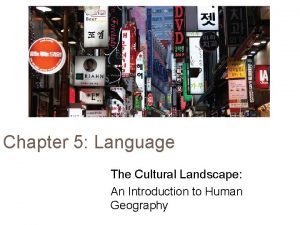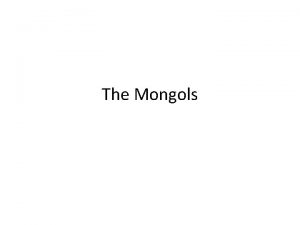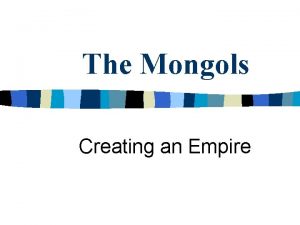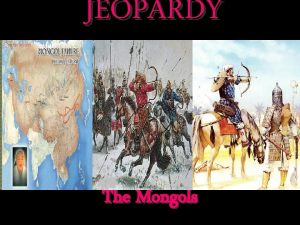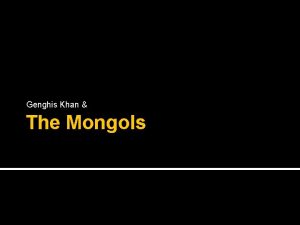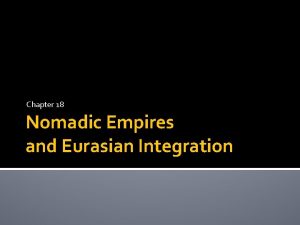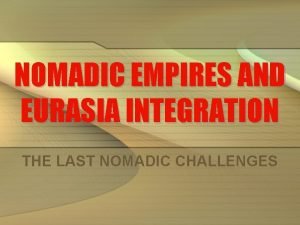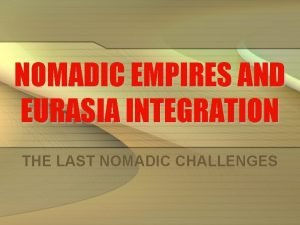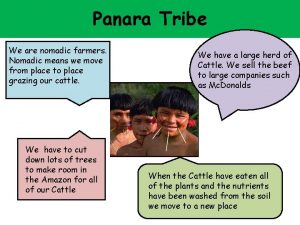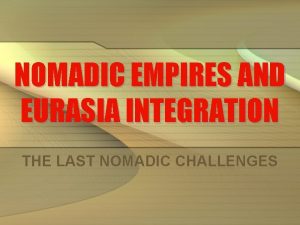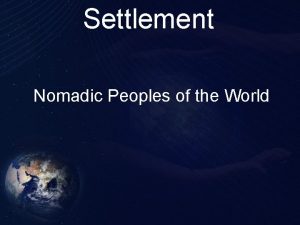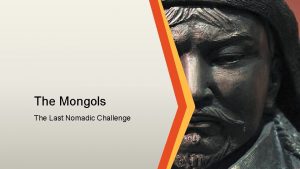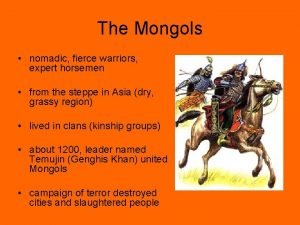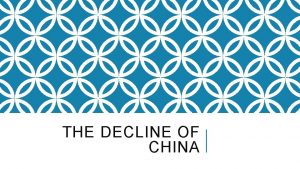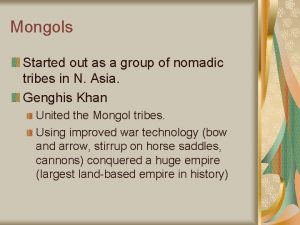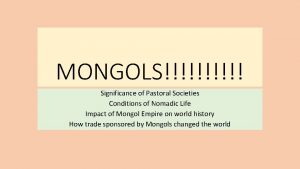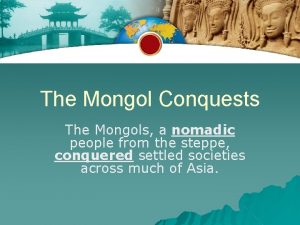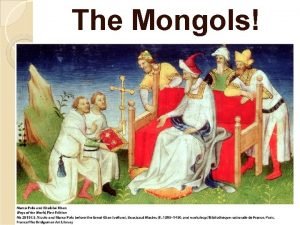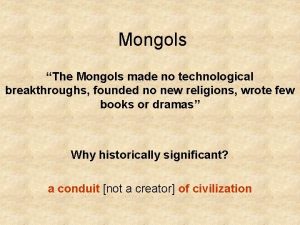The Mongols Chapter 15 unit 3 Mongols nomadic























- Slides: 23

The Mongols Chapter 15 unit 3


• Mongols nomadic tribes – herders of goats and sheep** • Tribe –basic unit of Mongol society • Men held dominate leadership positions • Women held considerable influence within the family – treated equally • Leaders were elected by free men as long as they could hold power Chinggis Khan

Mongol War Machine • Mongol males trained to ride, hunt and fight • Powerful short bows, fired from horseback, devastating weapons • Speed and mobility of Mongol armies made them the world’s best • Entirely cavalry** • Harsh discipline, brought punishments and rewards for conduct • Spies secured accurate information for campaigns


Conquest • Chinggis Khan set forth to conquer the known world • Mongols developed new tactics for capturing urban centers • Cities that resisted were utterly destroyed; their inhabited were kill or made slaves • Cities that submitted to avoided this fate; tribute ensured safety • After Chinggis died the territories were divided among three sons and a grandson

• The Russians became vassals of the khan of the Golden Horde lasting 2 ½ centuries (13 th 14 th and 15 th century) • Moscow benefited from the increased commercial possibilities brought by Mongol rule • The Mongol occupation was very important in Russian • ** The princes of Moscow collected tribute for the Mongol khans and became he seat of the Orthodox church.

What in the World The Russians called the Mongolians “Tartars. ” This term was derived from the place of punishment in the underworld of Greek mythology called Tartarus. So calling someone a Tartar was referring to him as someone from hell. Of all the cities of Russia, Moscow benefited the most from rule of the Golden Horde. By the 15 th c. Moscow united the other princes of Russia a feat that Kiev could not pull off and defeated the Golden Horde. This established the prince of Moscow as the leader of the Russia princes and ended Mongolian rule in Russia

Islam and Europe • Christian western Europe initially had been pleased by Mongol successes against Islam • Many in the West thought the Mongol khan was Prester John** • When the Mongols moved westward into Hungary, western Europeans had reason for concern. • Europe escaped more serious invasions, satisfied with their rich conquests in Asian and the Middle East, the Mongols did not return to Europe

Hulegu and the Islamic Heartlands Hulegu another grandson of Genghis Khan led the Mongolian armies against the Abbasid dynasty (capturing and destroying the city of Baghdad. ) They were stopped by a strange alliance. The Egyptian slave army of Mamluks led by Berbers were given permission to cross over territory in Palestine controlled by Christina crusaders to meet and defeat the Mongolian army. Islamic Mamluks the sworn enemies of the Christian crusaders, but both felt the religious differences should be set aside to stop the Mongolian threat.

Kublai Khan and the Yuan Dynasty Kublai another grandson, battled the Chinese Empire from 1235 -1271 and defeated them He assumed the title of Great Khan Rather than impose Mongolian conventions of ruler ship of the Chinese, Kublai khan established the Yuan dynast, similar to the traditional dynasties of China’s past. He then place the capital at Tatu, which is present-day Beijing.

• A new social structure emerged in China • The Mongols were at the top, their nomadic and Islamic allies were directly below them • Both groups dominated the highest levels of the administration Mongol women remained aloof from Confucian Chinese culture • They refused to adopt foot binding** and retained rights to property and control of the household

• The openness of Mongol rulers to outside ideas, and their patronage, drew scholars, artists, artisans, and office seekers from many regions • Muslim lands provided some of the most favored arrivals included in the social order just below the Mongols • They brought much new knowledge into the Chinese world • Kubilai was interested in all religions; Buddhist, Christian, Daoist, and Muslim • Kubiai welcomed foreign visitors, the most famous was the Venetian Marco Polo

Yuan Dynasty Kublai insisted on religious tolerance** Chinese literature and art blossomed Chinese began to resist the Mongolian cultural influence (using foreign rather the Chinese officials) He helped artisans and merchants which were at the bottom of the social structure (mean people) White Lotus Society **-filled with Yuan haters and Song dynasty supporters Poor peasant, Ju Yuanzhaang led a revolt that overthrew the Yuan dynasty and began the Chinese Ming dynasty. **

• Fall of the House off Yuan – Mongol expeditions of 1274 and 1280 – against Japan failed • Kubilai’s successors lacked talent, and the Yuan administration became corrupt • By 1350, the dynasty was too weak to control all of China • Secret societies dedicated to overthrowing the dynasty formed • Many Mongols returned to central Asian, finally a peasant leader, Ju Yuanzhang, founded the Ming dynasty

One Last Mongol • Nomadic group of Turks led by Timur-I Lang or Timur the Land • Carved a Turkish Empire out of Persia, India and southern Russia • Did not have strenght and longevity of the mongols • After his death in 1405 the empire fell into civil war • Timur the Land were a watered down version of the conquest anf power of the Genghis Khan and the Mongols

• Timur is remembered for the barbaric destruction of conquered lands, his campaigns outdid even the Mongols in their ferocity • His rule did not increase commercial expansion, cross cultural exchanges, or internal peace • After his death in 1405 Timur’s empire fell apart, and the last great challenge of the steppe nomads of Eurasian civilizations ended Timu-I Lane

• Global Connections – The Mongol Linkages • Mongols brought the Muslim and European worlds new military knowledge, especially the use of gunpowder • Trade and cultural contact between different civilizations throughout Eurasia became much easier • Trading empires established in their dominions by Venetians and Genoese provided experiences for later European expansion • An unintended consequence was the transmitting of the fleas carry the bubonic plague • The Black Death for China and central Asia to the Middle East and Europe

The Upside of Bloodthirsty Mongol Conquerors Revitalize interregional exchanges between Asia, Europe, the Middle East and even Africa Pax Mongolia – trade and commerce was renewed under the watch of Mongol armies Conquered countries learned how to centralize government over diverse peoples The Mongols started the engine the ushered in the modern period of world history When Mongols declined Kingdoms of Europe, Asia, and the Middle East continued to centralizing power and developing interregional exchanges

The Least You Need to Know Genghis Khan established the Mongolian Empire through conquests of Asia Genghis Khan’s grandsons expanded the Mongolian Empire farther with the conquest of Russia, Persia, and China Mongol power declined after the loss of China to the Ming dynasty in the midfourteenth century

Continued Timur the Lane quickly created the Turkic Empire that included portions of central Asia, the Middle East and Russia, although the empire dissolved after his death The Mongol conquest ushered in a new age of interregional exchange and centralized government in Asia, Europe, and the Middle East

• Timur –I Lang** – Last major nomad leader; 14 th century Turkic ruler of Samarkand; launched attacks in Persia, Fertile Crescent, India, southern Russia; empire disintegrated after his death in 1405 • White Lotus Society** – Secret religious society dedicated to overthrow of Yuan dynasty • Ju yuanzhang** –Chinese peasant who led successful revolt against Yuan; founded Ming dynasty • Khanates – Four regional Mongol kingdoms that arose following the death of Chinggis Khan

• Shamanistic religion – Mongol belied focused on nature spirits • Golden Horde** – One of four regional subdivisions of the Mongol Empire after the death of Chinggis Khan; conquered and ruled Russian during the 13 th and 14 th century • Prester John** – A mythical Christian monarch whose kingdom supposedly had been cut off from Europe by the Muslim conquests; some thought he was Chinggis Khan • Mamluks** – Muslim slave warriors; established dynasty in Egypt; led by Baibars; defeated Mongols at Ain Jalut in 1260 • Kubilai Khan** – Grandson of Chinggis Khan; conquered China; established Yean dynasty in 1271 • Tatu – capital of Yuan dynasty; present-day Beijing
 Chapter 17 nomadic empires and eurasian integration
Chapter 17 nomadic empires and eurasian integration Chapter 17 nomadic empires and eurasian integration
Chapter 17 nomadic empires and eurasian integration Chapter 15 the last great nomadic challenges
Chapter 15 the last great nomadic challenges Chapter 18 nomadic empires and eurasian integration
Chapter 18 nomadic empires and eurasian integration Chapter 17 nomadic empires and eurasian integration
Chapter 17 nomadic empires and eurasian integration Mongols chapter 13
Mongols chapter 13 Mongols chapter 13
Mongols chapter 13 Advantages and disadvantages of nomadic farming
Advantages and disadvantages of nomadic farming Nomadic religion
Nomadic religion Manorialism def
Manorialism def Nomadic herding definition ap human geography
Nomadic herding definition ap human geography Old longings nomadic leap
Old longings nomadic leap What was the nomadic lifestyle
What was the nomadic lifestyle Nomadic network
Nomadic network Nomadic user disebut juga
Nomadic user disebut juga Islamic jeopardy questions
Islamic jeopardy questions Nomadic computing
Nomadic computing Language youtube
Language youtube Vikings and mongols
Vikings and mongols The nomadic network
The nomadic network Asian massage mongol
Asian massage mongol Gsars
Gsars Language
Language Unit 6 review questions
Unit 6 review questions
